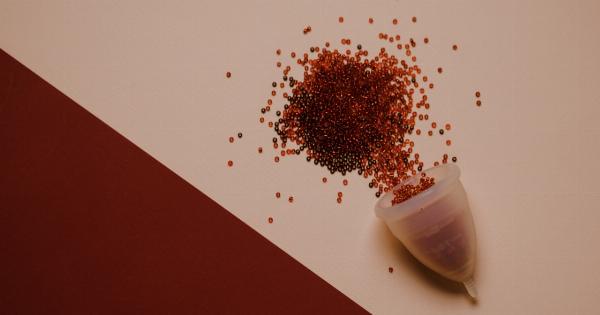Gymnastics is a highly dynamic and physically demanding sport that involves a combination of strength, flexibility, coordination, and agility.
While its benefits are widely acknowledged in improving overall fitness and body control, gymnastics also plays a crucial role in preventing vaginal fibrillation. Vaginal fibrillation, commonly referred to as pelvic organ prolapse (POP), is a condition in which the pelvic organs, such as the bladder, uterus, and rectum, descend into or protrude out of the vagina due to weakened pelvic floor muscles.
In this article, we will discuss how gymnastics can help prevent vaginal fibrillation and its importance in maintaining pelvic floor health.
The Pelvic Floor and Vaginal Fibrillation
The pelvic floor is a complex structure composed of muscles, ligaments, and connective tissues that form a hammock-like support system for the pelvic organs.
These muscles help maintain continence, support the abdominal and pelvic organs, and contribute to sexual functions. However, factors such as pregnancy, childbirth, aging, and obesity can weaken the pelvic floor muscles, leading to vaginal fibrillation.
Vaginal fibrillation can cause various symptoms, including a sensation of vaginal bulging, urinary incontinence, fecal incontinence, and discomfort during sexual intercourse.
Apart from these physical discomforts, it can also have a significant impact on a woman’s quality of life, affecting her confidence, self-esteem, and overall well-being. Therefore, it is crucial to take preventative measures to maintain pelvic floor health and reduce the risk of vaginal fibrillation.
Gymnastics and Pelvic Floor Strength
Gymnastics exercises, such as tumbling, balance beam routines, and uneven bars, require immense core strength and stability.
The core muscles, which include the pelvic floor muscles, play a vital role in maintaining proper alignment, stability, and control during gymnastics movements. Regular engagement of these muscles through gymnastics helps strengthen the pelvic floor, reducing the risk of vaginal fibrillation.
Specific gymnastics exercises focus on activating and strengthening the core and pelvic floor muscles. These exercises involve movements such as bridges, planks, pike-ups, and leg lifts, which target the muscles in the pelvic floor region.
By incorporating these exercises into a gymnastics routine, individuals can develop better control over their pelvic floor muscles and improve their overall strength and stability.
Improving Flexibility and Range of Motion
Gymnastics emphasizes flexibility and range of motion, as athletes need to perform various dynamic movements that require a wide range of joint motion.
The stretching exercises in gymnastics help improve flexibility in the hip, groin, and pelvic regions, contributing to better pelvic floor health. Increased flexibility reduces the strain on the pelvic floor muscles, preventing wear and tear that could lead to vaginal fibrillation.
Regular gymnastics training also helps improve overall posture and body alignment.
Proper alignment not only reduces pressure on the pelvis but also ensures that the pelvic floor muscles bear the load effectively, thereby reducing the risk of pelvic floor dysfunction.
Enhancing Body Awareness and Control
Gymnastics involves intricate movements that require excellent body awareness, coordination, and control.
Athletes must have precise control over their body movements to execute routines flawlessly, often relying on their core and pelvic floor muscles for stability and balance.
By practicing gymnastics, individuals develop better proprioception, which is the body’s ability to sense its position in space.
Increased proprioception enhances pelvic floor muscle control, allowing individuals to engage these muscles effectively and prevent the onset of vaginal fibrillation.
Gymnastics and Postpartum Recovery
Pregnancy and childbirth can greatly impact the strength and integrity of the pelvic floor muscles. The strain placed on these muscles during pregnancy, combined with the stretching and trauma of childbirth, can significantly weaken them.
As a result, many women experience vaginal fibrillation postpartum.
Gymnastics can be highly beneficial for postpartum women in restoring and reconditioning their pelvic floor muscles.
The exercises and movements in gymnastics help strengthen the pelvic floor, allowing for quicker recovery and reducing the risk of vaginal fibrillation. However, it is important to consult with a healthcare professional before initiating any exercise regimen postpartum to ensure proper recovery and avoid any complications.
Preventing Vaginal Fibrillation: Gymnastics vs. Other Exercises
While there are various exercises and activities that can help strengthen the pelvic floor muscles, gymnastics offers several unique advantages in preventing vaginal fibrillation.
Gymnastics is a whole-body exercise that engages multiple muscle groups simultaneously. It provides a comprehensive workout that targets not only the pelvic floor but also the core, upper body, and lower body muscles.
This full-body engagement contributes to overall fitness and muscle balance, indirectly supporting pelvic floor health.
Additionally, the dynamic nature of gymnastics movements helps build strength and resilience in the pelvic floor muscles.
The constant challenges posed by various gymnastics apparatus and routines stimulate the muscles to adapt and become stronger, reducing the risk of vaginal fibrillation.
Starting Gymnastics Safely
Before embarking on a gymnastics journey, it is essential to start slowly and ensure proper technique and form. Gymnastics can be physically demanding and may pose a risk of injury if not approached carefully.
Seek guidance from qualified gymnastics coaches or instructors who can design appropriate training programs suitable for your fitness level and goals.
Warm-up exercises are crucial in gymnastics to prepare the body for the intense movements and minimize the risk of strain or injury. Remember to incorporate stretching exercises targeting the pelvic floor and surrounding muscles in your warm-up routine.
This will contribute to improved flexibility and reduce the risk of pelvic floor dysfunction.
The Importance of Consistency
Consistency is key when it comes to reaping the benefits of gymnastics in preventing vaginal fibrillation.
Make time for regular gymnastics training sessions, and gradually increase the intensity and complexity of your workouts as your strength and skill progress. Aim for a well-rounded routine that includes exercises targeting core strength, flexibility, and body control.
It is important to listen to your body and acknowledge its limits. If you experience pain or discomfort during any gymnastics exercise, consult with a healthcare professional for guidance.
They can help determine if modifications or alternative exercises are necessary to prevent any further damage to the pelvic floor.
Conclusion
Gymnastics is not only a captivating sport but also a valuable tool in preventing vaginal fibrillation. By engaging in gymnastics exercises, individuals can improve pelvic floor strength, flexibility, body control, and overall fitness.
The physical demands of gymnastics help develop a resilient and functional pelvic floor, reducing the risk of vaginal fibrillation and its associated complications. Incorporating regular gymnastics training into your fitness routine can contribute to better pelvic floor health and enhance overall well-being.

























